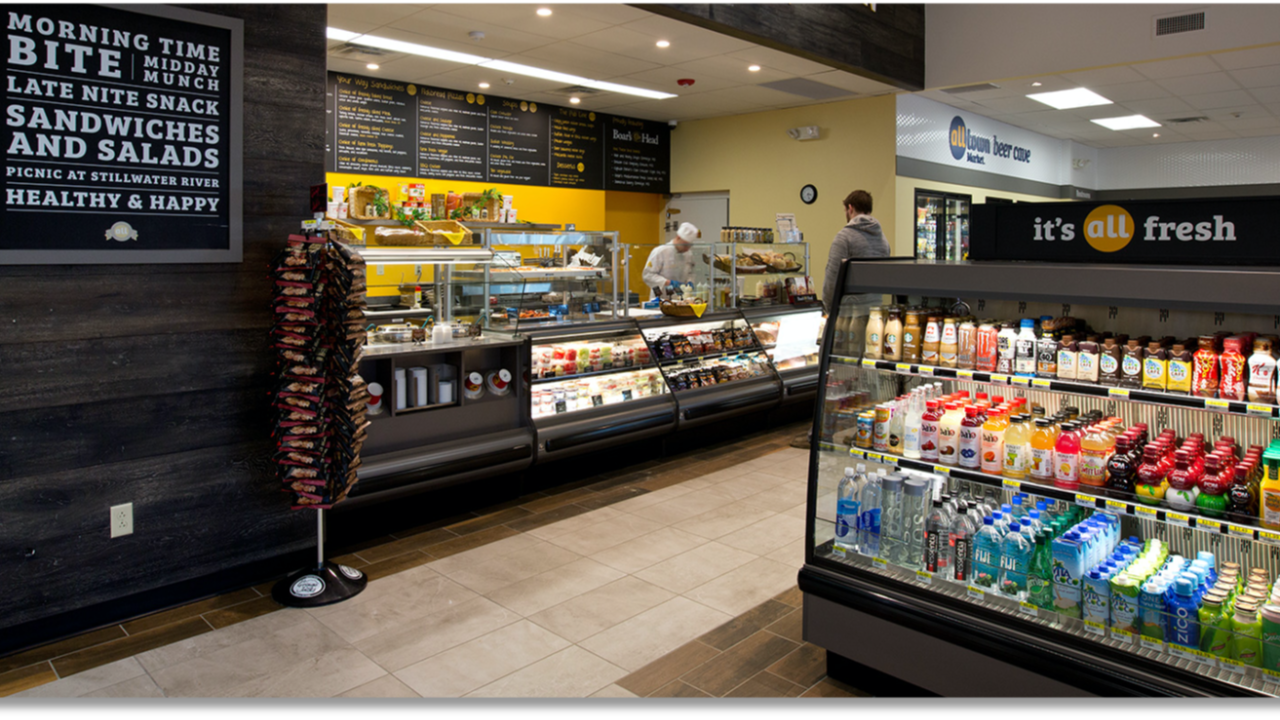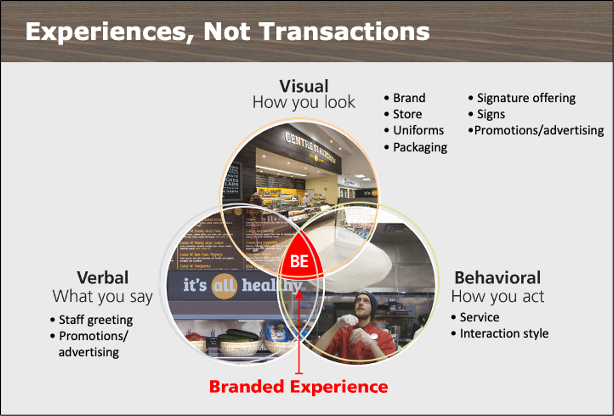Store Design for the Retail Environment
May 13, 2024
One of the most important, yet biggest challenges facing a retailer is creating a new store vision for your chain, while simultaneously running your day-to-day business. There are only so many resources to go around and carving out the strategic time to not only manage the process, but also actually create a new store vision is daunting.
With that in mind, here are some key items to consider:
This Is Not Just About Store Design, But It Is About Creating An Experience: Experiences create emotional connections with your customers in order to keep them coming back. You need to start with the mindset that you are going to be creating a branded experience, which is much more than picking materials and finishes and trying to figure out store adjacencies.
Understand Your Industry: This is the first vital step to creating a long-term vision. It is important to not only know where your industry has been, but more importantly to grasp where the industry is headed. All too often, retailers fail to embrace the coming change in their industries. Another valuable part of this step is to look at related “best in class” retailers outside of your industry to see what makes them so successful.
Talk To Your Customers: Your customers are harbingers of things to come – watch and listen closely. The customers of your stores are not exclusively yours – they are your competitor’s and they visit other industry retail outlets that influence their perspectives. Gaining a better understanding of your customer prior to heading into your strategic process, gives you a leg up on where to head.
This Is An Exercise Of Process And Art: The overall management of creating your store of the future is a necessary tenet in order to keep the planning on-time and on-budget. Whether you manage this in-house or you outsource this strategic endeavor to industry experts, managing both the process of decision-making as well as the strategic direction of the design will be the difference-maker in creating a cost-effective vision. It is good to start with a baseline budget and clearly articulate that at the outset in order to manage expectations.
Manage The Process: Managing the process is a critical component of the overall store brand design. Timely decision-making that is targeted and focused on a common end game keeps your strategic direction and branding on plan. So, what are the steps on how to approach the overall process management?
- Start At The Baseline:
- Store audits – visit existing sites as well as competitive locations – both in industry and out of industry to gain a baseline understanding of the business. Understand the good, bad and the ugly. Find the voids in your existing offer.
- Brand Pillars – Remember, this is about creating an experience and the brand pillars are the foundation of this experience. Develop three brand pillars that help guide all decision-making in the future for operations, products and design. Brand pillars help guide our design to be thought of as “local” or we want to our products delivered with “speed”. These are examples of brand pillars that help define what the concept will stand for. Brand pillars are directional in nature and the majority of decisions should follow them accordingly. It is important that your brand pillars are differentiating and that you can deliver on the expectations they establish.
- Vet Your Brand Pillars Against Customers:
- Focus groups – Now is the time to determine whether the brand pillars resonate with your prospective and existing customers. Bouncing ideas off customers in a focus group is an excellent way to vet your pillars. If you are spot on, that is great news. If there is push back, better to find that out now rather than later. If possible, it is good to get a cross sample of customers that are both loyal to your brand as well as those who visit your stores intermittently.
- Intercepts – Customer intercepts are another way to gain feedback on products and brand design. Speaking to existing customers engages real-life users of your current designs and potential excites your customer base that “good things are coming”.
- Surveys – Online surveys allow the most participation by your followers on social media and get your customers to participate in the process. Sometimes, the best ideas come from the people that use your services the most – the customer.
- Manage The Myriad Of Decisions:
- Gatekeeper – Assign a gatekeeper – someone that has the role of having all of the decisions flow through them. Note that I didn’t say that this gatekeeper makes all the decisions, but manages the decision-making process. This is a critical role in keeping all participating parties on a common task.
- Establish a cross-functional team – Cross-functional teams that involve all key aspects of the business are critical to the long-term success. The team should include people from operations, merchandising, real estate, and marketing. Better to get them involved sooner rather than have them second-guess you later.
- Industry Expertise – Don’t underestimate the need for external industry expertise. Expertise from the outside bring fresh and often non-industry ideas to the table in addition to relieving the overload of tasks that have to be tackled by the internal team. Remember, your internal team all have day jobs, so managing a complex strategic project can be very difficult in addition to their normal daily tasks. Also, this is not easy and often requires professional expertise. The expertise you engage should be able to help with establishing the brand strategy (brand pillars) as well as 2-dimensional items (i.e., store graphics, packaging) as well as 3-dimensional items (architecture, store planning, interiors, colors and materials selection, etc.).
- Store attributes dictate size – Most approaches tend to pick a size of the store and then fill it with merchandising. An alternative approach would be to identify all of the attributes (food, beer, etc.) that will be a part of the store and based on the number of attributes, that dictates the size of the store.
Manage The Art: Managing the art requires the same type of rigor that the overall management of the process. Brand design should be functional as much as it should be attractive to the customer. Without efficiencies and operational considerations, the brand design will be difficult to maintain as it is extended to multiple store configurations.
- Build Off The Brand Pillars:
- Brand architecture to support – The entire family of brand elements should work in tandem with your brand pillars. Nomenclature, fonts, colors and branding hierarchy should all be synonymously created in a cohesive branding package.
- Signature offerings – Development of key signature items that are in concert with the brand pillars is critical to give customers an easy way of remembering the core elements of your brand. You may think and sleep your brand but your customer doesn’t – a signature offer makes it easy for them to keep you top-of-mind.
- Vertical integration of brand – All communication elements within the store should speak toward the brand. This means that the visual (what you look like), the verbal (how you talk about yourself), and the behavioral (how you act) all need to be aligned so as to communicate and reinforce a cohesive brand message and experience.

- From uniforms to paper products to how employees engage the customer, each of these branding components working in tandem help solidify the brand. It only takes one negative interaction with a store employee to tarnish your brand.
- Store Design And Flow:
- Standardized template – Not all two stores are built the same so developing a standardized template from which modifications and adaptations can be derived is critical to the management of the brand.
- Modifications to other store types – From the standardized template, create other prototypical layouts that can represent the largest array of store sizes within your network.
- Testing And Validation:
- Test the prototype – Expect to build a prototype and tweak the next several stores, it is the nature of the beast. Gaining real-life feedback from the end-user customer is absolutely critical to fine-tuning your branding experience.
- Seek post-open consumer feedback – Formally surveying both new and existing customers on the new concept helps provide a third-party perspective to the overall experience.
- No silver bullets – Lastly, it is critical to go into this process with an open mind that there are many ways to express your brand design. There are no silver bullets – brand design and operational expression of that brand design are a few of the many contributing factors to the success of a store of the future.
Strategic branding projects like creating a “store of the future” are immensely complex; will drain internal resources; and it’s a nonstop effort to keep on task. They can be quite daunting to tackle straining even the best organizations and tasking their daily operations. But, in the end, strategic branding communicates the future of your chain to your customers as well as becomes a rallying cry for your entire organization.
Want more ideas? For more information on a Store of the Future, visit the Gray Cat Learning Series: https://www.graycatenterprises.com/store-of-the-future
Co-Author: Kraig Kessel ([email protected]) is the co-founder of Kraido, a firm dedicated to developing branded environments, specializing in petroleum retailing and convenience stores. For more information, please visit: www.kraido.com.
